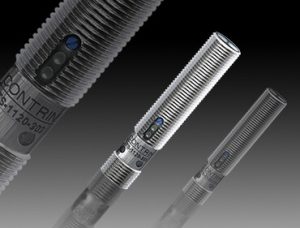When we bite into a sandwich or drink a glass of milk, we assume that our food was properly processed. To ensure that this is the case, many food and beverage facilities take extra precautions in packaging their products and maintaining a clean facility environment. One way they do so is by employing sensors—specifically photoelectric and inductive sensors—to help do the job. Here’s how:
Photoelectric sensors in the food & beverage industry
Photoelectric sensors are widely used in the food and beverage industry. By using light beams to detect a specific object, a photoelectric sensor can determine the presence or absence of the target material. This is critical to maintaining reliable systems and production in a food and beverage facility, as a photoelectric sensor can help monitor the process of proper packaging. For example, one miniature photoelectric sensor was used in an application to individually package cheese portions in a food processing plant. By detecting the presence of each portion, the sensor ensured consistent portion size.
Inductive sensors in the food & beverage industry
In addition to photoelectric sensors, inductive sensors are also used in the food and beverage industry. While both sensors are used to determine the presence or absence of an object, inductive sensors do so by employing electromagnetic induction, not light beams. An example of this is with a rugged inductive sensor that was used in processing dairy products. As raw milk traveled through stainless-steel pipes, the sensor would control the valves in the pipes to prevent any cross-contamination. Thus, the milk was kept clean as it traveled to each process station.
As long-time licensed distributors of Contrinex products, Locon Sensor Systems offer many Contrinex photoelectric and inductive sensors on our site. To learn more, contact us today.

